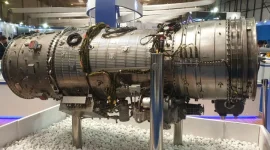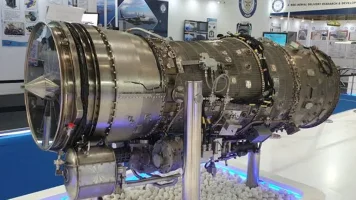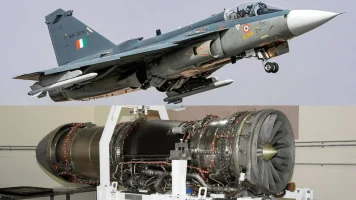- Views: 11K
- Replies: 55
In a major push for India's self-reliance in military aviation, the Defence Research and Development Organisation (DRDO) is set to test an upgraded indigenous jet engine on a Tejas Light Combat Aircraft (LCA).
The Gas Turbine Research Establishment (GTRE), a premier DRDO laboratory, has received the green light to integrate its Dry Kaveri engine, fitted with a newly designed afterburner, into a Tejas prototype for crucial flight validation.
This development is a critical milestone for the long-running Kaveri engine program, which began in 1989 with the goal of producing a domestic powerplant for Indian fighter jets.
A successful trial could pave the way for the Kaveri engine to replace the currently used American-made General Electric engines in the entire fleet of Tejas Mk1A fighters, of which the Indian Air Force (IAF) has 83 on order with plans for 97 more.
The engine at the center of the upcoming tests is a non-afterburning variant known as the Dry Kaveri, which was primarily developed for the DRDO's stealthy Ghatak Unmanned Combat Aerial Vehicle (UCAV).
In recent ground trials, this engine successfully produced 49-50 kilonewtons (kN) of thrust, exceeding its initial goals. By integrating a new, domestically developed afterburner, GTRE scientists aim to increase the engine's maximum thrust to approximately 80 kN.
This enhanced power output would bring the Kaveri closer to the 78.7 kN of thrust generated by the GE F404-IN20 engine that currently powers the Tejas Mk1 aircraft.
The ultimate ambition for a future version, dubbed Kaveri 2.0, is to achieve a thrust of 83-85 kN, making it a competitive, home-grown option for India’s frontline fighters.
The integration and flight tests will utilize an older Limited Series Production (LSP) model of the Tejas.
While the IAF has raised safety concerns about testing an uncertified engine on a single-engine aircraft and suggested using a twin-engine plane or an unmanned platform, GTRE is confident in proceeding with the Tejas testbed.
This crucial phase follows extensive development and earlier tests. Before the in-flight validation on the Tejas, the Dry Kaveri engine is scheduled for final high-altitude trials in Russia, set to begin in September 2025. These tests will be conducted at Russia’s Gromov Flight Research Institute using a modified Ilyushin Il-76 transport aircraft as a Flying Test Bed, where the Kaveri will temporarily replace one of the aircraft's four standard engines.
Despite the progress, significant challenges remain. At approximately 1,180 kg, the Kaveri engine is heavier than its foreign counterparts like the GE F404 (1,036 kg), which could affect the aircraft's agility.
GTRE is actively working on weight reduction by using advanced, lighter alloys and manufacturing techniques, with support from Indian public-sector undertakings like Mishra Dhatu Nigam Limited (MIDHANI), which specializes in critical aerospace materials.
The success of the Kaveri project is central to India's strategic goal of achieving autonomy in critical defence technologies, as the nation currently relies heavily on imported engines from the United States, Russia, and France for its military aircraft.
The upcoming tests represent a pivotal moment in demonstrating the maturity and viability of India’s indigenous aero-engine capabilities. Final certification for the Dry Kaveri engine is targeted for 2032.





